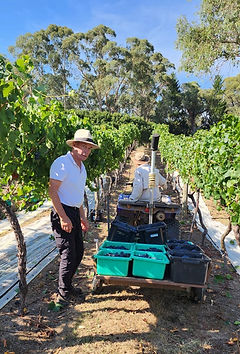

the story so far

After fifteen years of extensive trials, the 2006 Mount Terrible Pinot Noir was John Eason’s first tilt at his ambition to make a Pinot in the style of the great French Burgundies. Released to acclaim (95 points from James Halliday) in January 2009, the 2006 vintage was followed (passing over a couple of hiccups due to bushfires) by the 2008 (94 points) and the 2010 (95 points) which were listed in restaurants such as Melbourne’s Vue de Monde, Guillaume at Bennelong in the Sydney Opera House and the 2 Michelin Star The Square in London’s Mayfair. 2011, a dismal wet year, yielded a pale but delicately flavoured wine (90 points), but the subsequent 2012 (95 points), 2013 (95 points), 2014 (95 points), 2015 (97 points), 2016 (96 points), 2017 (95 points), 2018 (96 points), 2019 (95 points), 2021 (97 points) and now for our first two estate grown Chardonnay vintages 2022 (97 points) and 2023 (95 points) combine to show what the dry and stony Jamieson Valley has to offer.
Reviewing thirty years in the Valley, John says: “When we left London, Janene and I knew exactly where we wanted to live. We had picked the spot on previous visits: the valley of the Jamieson River. It took us six months to find the right property – eight riverside acres with a northerly aspect, access to water and a beautiful site for a house. The land was just rough pasture but it had huge potential.
“There were no vineyards in the area then but I had a hunch the sloping shaly clay and river-loam ought to grow good grapes. I experimented with several different varieties but best by a mile was Pinot Noir, which was fortunate because that was what we both liked best to drink.
“The results of early bucket-and-stick experiments were erratic, but with the Pinot there were a couple of triumphs, enough to justify more extensive plantings in 2001.
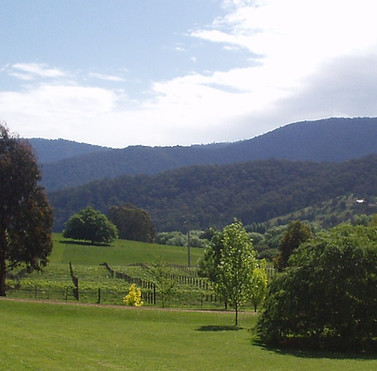
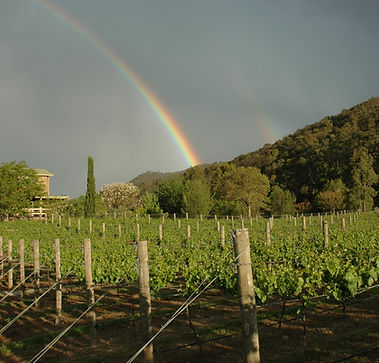
“But ’Strine Pinot isn’t Red Burgundy'. In the Nineties over-cropping was widespread and too many domestic pinots were thin and fruit-driven. We were after something more layered, a wine that would linger on the palate and develop interest and complexity as it matured.
“Progress towards our goal was slow and beset with difficulties but in 2006 we succeeded in producing a wine that truly showed what the land was capable of.
“We had high hopes for the 2007 vintage. The Gods thought otherwise. Frost blasted the buds and what little survived the smoke of bushfires tainted.
“The harvest in 2008 was good, but in 2009 the bushfires came back. Again – a small enough matter compared to what others lost in that tragic year – the fruit was spoilt and another season’s work went for nothing.
“It was beginning to look like we were only going to get a vintage every other year. And sure enough, after a near-perfect crop in 2010, we came close to losing everything once again due to unseasonable rain in 2011. But then luck struck. Two weeks before harvest, the skies cleared, the fruit ripened and the vintage (four weeks later than in other years) yielded a wine pale in colour and lacking the structure and complexity of previous years, but with excellent primary fruit.
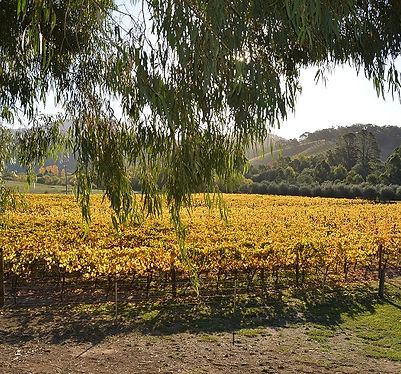
.
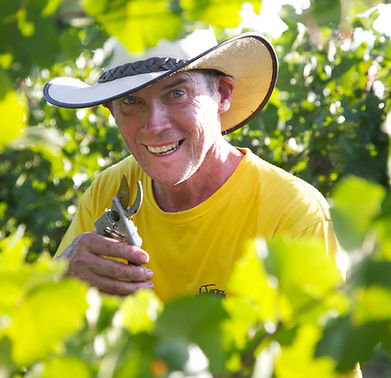
“For the subsequent nine years our luck has largely held. 2012 was a bit on the wet side and we had a plague of wasps to contend with; the vintage, though small, was of good quality. 2013 was a warm, dryish but not too hot year where everything in the vineyard and the winery went entirely to plan and the resulting wine, released in 2016, surpassed anything that had gone before.
“For many in the business the 2014 season was difficult. But not for us. For once, we escaped the frosts and the bushfires that affected other parts of Victoria, and the warm, dry summer made for another near-perfect vintage.
“2015 was another highly satisfactory year. Dry but not too hot with no disease pressure, it culminated in an excellent crop. The wine made itself, and is, in my judgement, the best we have ever made.
“The 2016 season however started badly with an unwelcome early Christmas present: a damaging frost later than any previously recorded in this district. I remember waking up on the morning of 27th November 2015 and looking out the window and thinking: ‘What’s all that pollen doing on the ground?’ As the day warmed up, Hope, that treacherous counsellor, whispered: ‘Maybe we just got away with it,’ but by the next day it was obvious we hadn’t. Upwards of half the developing bunches were burnt, but many of the vines in the upper parts of the vineyard escaped damage and the grapes there ripened normally. The summer of 2016 was hot and dry and we picked our small crop earlier than usual. The grapes were in very good condition and the inclusion of a significant number of the ‘secondary’ bunches that had developed on the frost-affected vines contributed valuable acid to the final must. The winemaking process went without a hitch and after eighteen months in barrel the wine was bottled on November 22nd 2017.
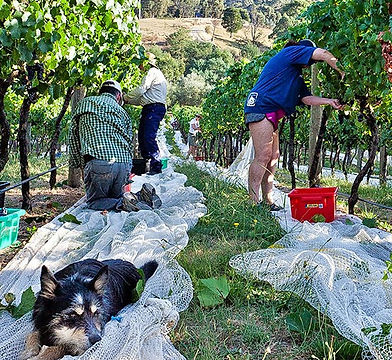
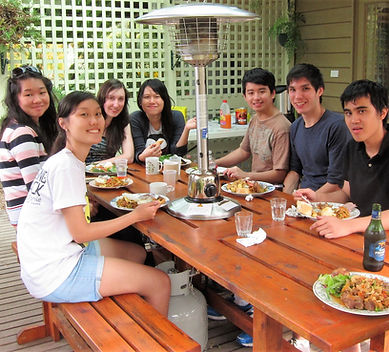
“2017 was another excellent year for us. Things are going too well, I thought. I’m beginning to feel nervous. We picked six tonnes on March 18th in perfect condition with a Baume of 13.5 degrees and a total acidity of 5.6 grams per litre. Winemaking went well, the wine was bottled in December 2018 and will probably be released early in 2020.
“2018: our best season ever. It's almost as if the vines got wind of the proposal to bulldoze them when I went temporarily blind (don't ask). And picking too went brilliantly. For once we had more people than we needed, the weather was perfect and we got the whole vineyard picked by 2pm, which left 10 hours for the party. Actually it's not strictly accurate we got the whole crop picked; we ran out of storage space in the refrigerated container (where the grapes are chilled for 24 hours before crushing) which left six or eight rows unpicked but we got them in a couple of days later and I made Rose out of them.
“2019 was a bit like 2016: cold weather at the time of flowering reduced fruit set which resulted in fewer and smaller bunches. But I have no complaints as to the quality of what we got on March 9th. Picking was completed by mid-afternoon, the ferment went through without a hitch, and the wine in barrel is looking extremely satisfactory. Two weeks later we made a little Rose and some experimental sparkling wine out of the secondary bunches.
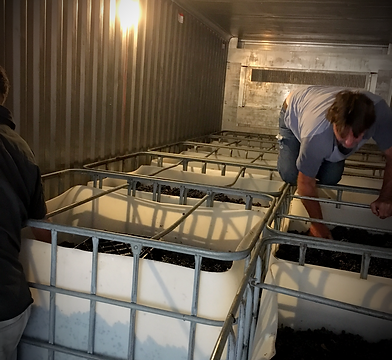
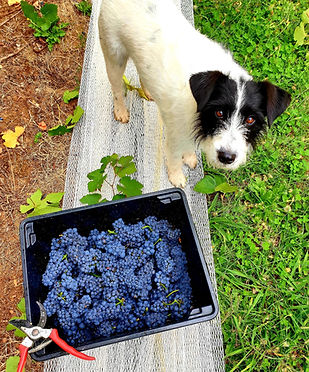_edited.jpg)
"2020. The Bushfires didn’t get us but the Coronavirus did. Can’t find much good to say about 2020. But for the sake of completeness: despite drought, fire and smoke, late summer flooding and a plague of poisonous snakes, the grapes, and the test wine we made from them, came back free of smoke taint. So, employing the Saignee technique (look it up) we made a ball-tearer of a Rose and a very small amount of Pinot which, despite initial optimism, is not good enough to be Terrible and we will not be releasing.
The 2021 Vintage.
From the viticultural (if no other) point of view, 2021 was a very, very good year. But instead of 50 of our closest friends blitzing the picking in 6 hours, it fell to a small but determined band of stalwarts. Took three long days. We got in just under 6 tonnes of the cleanest fruit at 13.3 degrees Baume. After bleeding off a little juice to make Rose, the rest of the Pinot went through fermentation perfectly and the resulting wine earned us 97 points from James Halliday and a proud place in his 100 Best Wines.


A second cooler than normal summer meant our 2022 Pinot didn’t ripen until the last week in March, as was also the case for our first crop of Chardonnay. Both vintages were small, but the Chardonnay, in particular, looked really good. The wine it made earned us a wonderful 97 point review from James Halliday.
2023: La Nina again but we coped. 2023 Pinot will be released next year but the 2023 Chardonnay (95 points) has turned out beautifully.
And the 2024?
Again a bit cooler and wetter over summer than I would have liked, but I'm very happy with both the red and the white.
Despite 2024 being another coolish summer, the longer ripening worked in our favour. The 2024 Chardonnay, in particular, turned out perfectly and has been very well received.
2025, though not hot, was warmer and we picked two weeks earlier. The Chardonnay came in at 14 deg Baume, the Pinot (which for reasons I go into in the latest News and Events posts) we had to devote entirely to Rose, at 13.5. The necessity of downsizing our Pinot planting is sad, but we will continue making wine in this valley, albeit on a more modest scale.
